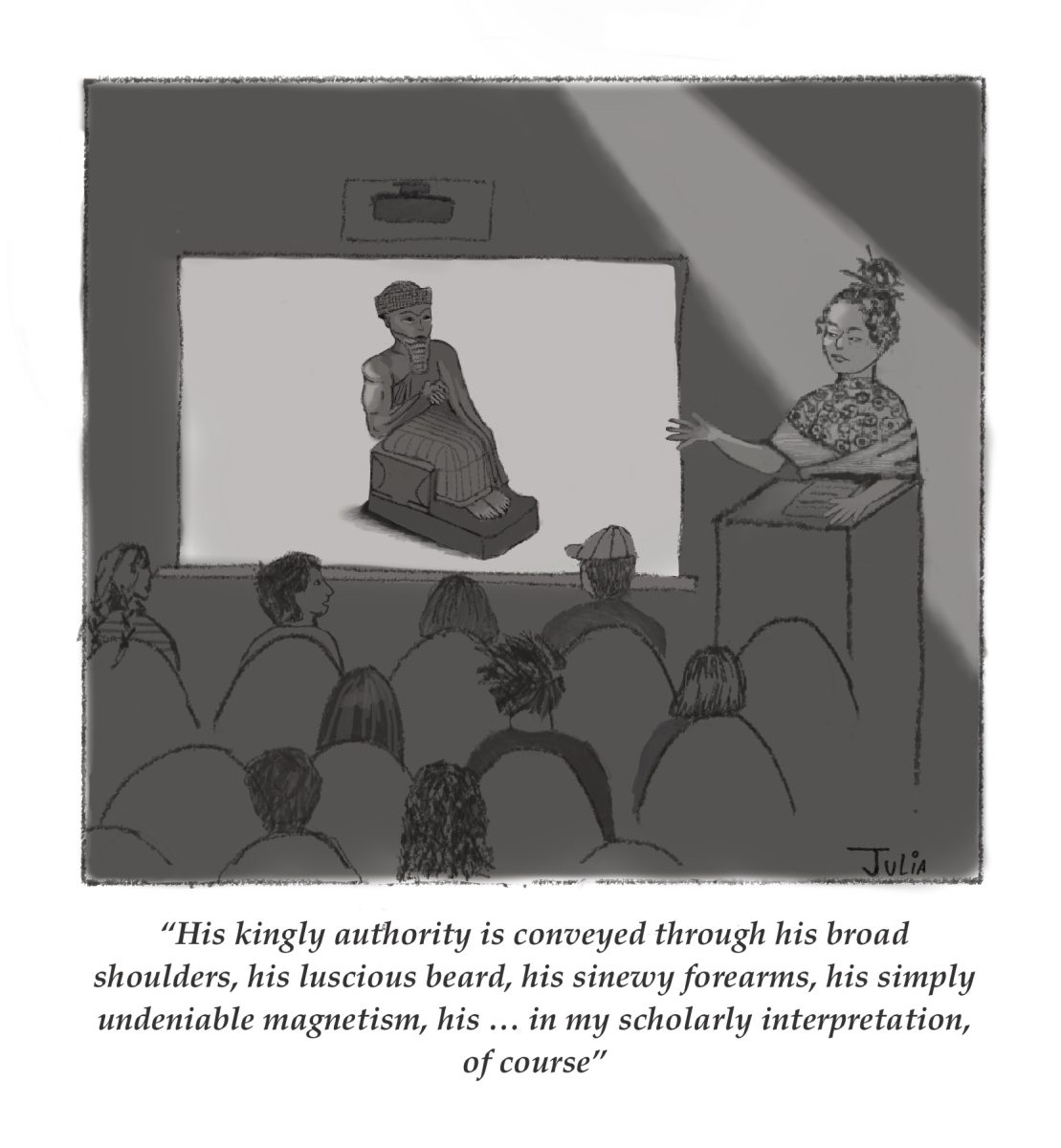Millions of Americans around the country took to the streets of their communities for the No Kings 2 protest on Oct. 18 — a follow-up to the protests on June 14, which saw over five million people protest in thousands of cities and towns across America. Berkshire County was no exception. Dozens of protesters lined the streets in downtown North Adams, with similar demonstrations across the county, from Pittsfield to Stockbridge, Great Barrington to Lanesborough. I was at No Kings 2 along with a small group of peers. As far as I could tell, we were some of the only students from the College in attendance.
The No Kings protests aren’t alone. Greylock Together, the local chapter of the nationwide Indivisible Movement and the primary organizer behind Berkshire area No Kings and other anti-administration protests, has meetings every other Monday in the First Congregational Church — only a stone’s throw from Paresky. These meetings are well-attended by locals, but there seems to be a demographic that is noticeably missing: In a town dominated by a largely progressive college campus, there are almost no college students represented at these meetings. While yes, the College is small, and students here often take on a large workload, many other colleges similar in size and academic rigor to Williams seem to be able to sustain highly energized student political organizations. Colleges like Oberlin have student organizations closely affiliated with organized labor and campus staff. Others, like Wesleyan or Vassar, have prominent Democratic, Republican, and Democratic Socialist clubs engaging in canvassing, forums, volunteering, advocacy campaigns, phonebanking, protests, and various forms of political activities. Even our archnemesis Amherst seems to have extensive political participation among its students. Why, then, does Williams lack an energetic political scene?
The answer most people point to — besides the academic workload — is the geographic isolation of Williamstown. We aren’t in the heart of Boston or New York, like Boston University, Harvard, or Columbia, or even in a mid-sized college town like Cornell in Ithaca, N.Y., or Wesleyan in Middletown, Conn.
Williamstown is (with all due respect) a sleepy college town. Combined with a relatively infrequent bus system and long driving times to the nearest cities — if you’re lucky enough to have a car — Williamstown’s isolation is the most likely suspect behind our comparative lack of political engagement.
It might seem like Williamstown and the Northern Berkshires don’t have anything politically relevant going on, but this is far from the truth. Williamstown’s housing market is an example of a crisis under the radar of many students. Town zoning laws that limit construction of multi-family and low/middle-income dwellings, with a relatively low supply of residences, inhibit low- and middle-income workers’ ability to live near their workplace in town, which can exacerbate socioeconomic disparities in the region.
I come from a similarly rural county in northwest Washington state with a population near equal to that of Berkshire County, and I know firsthand that it is a lot easier to get into local politics than it may seem. At my high school, some friends and I founded a small progressive organizing club that canvassed against ballot measures that would have hurt the people of my state, and facilitated opportunities for people to organize with local groups. Through this, my friends and I gained valuable connections in local politics, and last summer, I was a campaign manager for a friend of mine from high school who decided to run for School Board against the 10-year incumbent. It wasn’t to pad a resume. It was because there were real issues in the area I’m from, and there was a tangible way we could get out there, knock on doors, and spread a message we believed in.
There are real issues that face local areas that often simply lack people to fight for them, volunteer their time, and participate in a cause greater than themselves. In our own area in the Berkshires, North Adams elects its mayor and city council on Nov. 4, with nearly every race fiercely contested. Local organizations, like the aforementioned Greylock Together, are spearheading the movement to protect local immigrants from Immigration and Customs Enforcement and resist the federal government’s authoritarian agenda. They paint a picture of a vibrant local political community just waiting for America’s future leaders to fuel the fight.
This culture of muted political activism hasn’t always been this way. In early May 1970, following the shooting at Kent State, students at the College went on strike in protest of the U.S. invasion of Cambodia during the Vietnam War, joining a national movement. The faculty temporarily canceled classes, allowing students to travel for anti-war demonstrations like the March on Washington or defer coursework. The strike at the College was organized by students who had attended a rally for Black Panther Bobby Seale in New Haven, Conn., and began organizing the day they returned to campus.
On the evening of May 4, 1970, the student body, of its own accord, packed into Chapin Hall and voted overwhelmingly in favor of an indefinite strike to protest the war. Today, an idea like this would likely be laughed out of the room by both students and administrators. Despite the attack on institutions of higher education (especially from the White House) for supposedly promoting a “radical subversive agenda,” it is clear that, at least at the College, there has been a decrease in political action in the past several decades. In a place where student political organizations historically thrived, there are now only sporadic protests and political organizing (e.g., the 2024 pro-Palestine encampment), which largely lack any form of widescale collective action or organization.
It’s not that students at the College don’t do anything in the political sphere of the Northern Berkshires. The Center for Learning in Action and Mutual Aid are just two examples showing that Williams students do engage with our community and have these organizations allowing them to. I firmly believe there are students who do these things, and even more who are motivated to do so, but just don’t have time or an outlet. This is also not to say that students necessarily must participate in politics or do so in a particular way. Rather, students motivated to that end should create outlets of their own to express their voice and constructively shape the issues of the community that we have the privilege to reside in.
A healthy democracy requires engagement. And that engagement must happen at every level — all the way down to small towns in rural counties like the one we live in. Why does the College seem to be more reserved in its students’ political action? It could be a result of readjustment following the COVID, or simply a student culture that has changed. Despite this, for a majority of the year, we live in this community here in the Northern Berkshires. With this in mind, the question is inevitably: Why is our voice not as loud as our presence, and what should be done to change that?
Sayer Theiss ’29 is from Mount Vernon, Wash.




